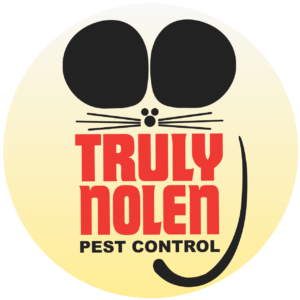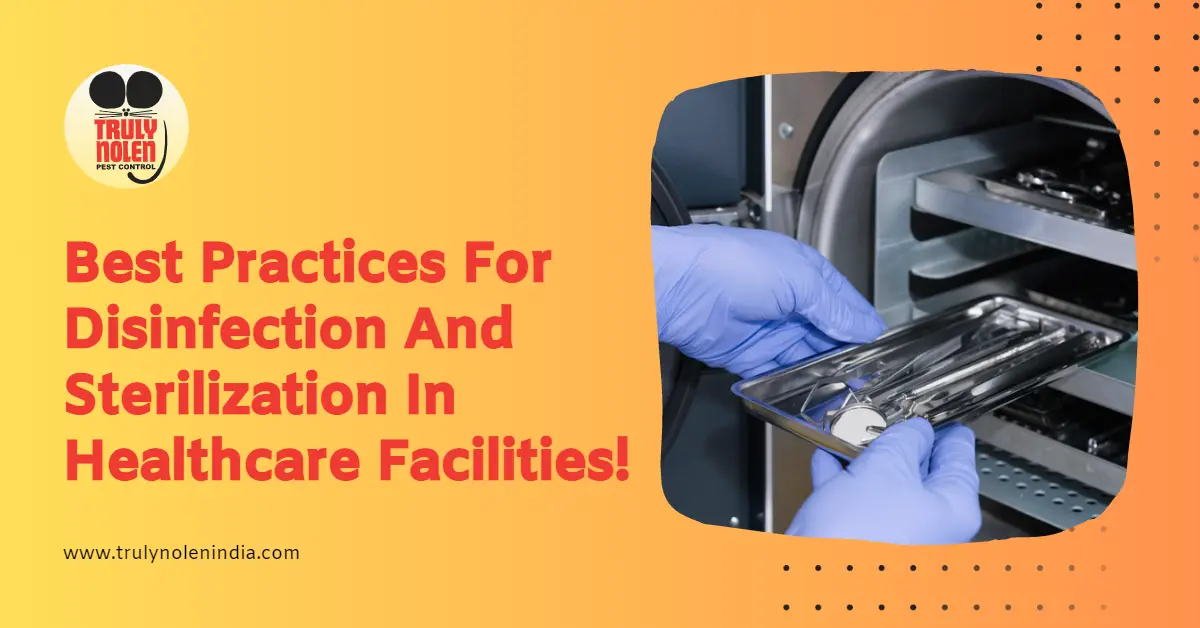In the ever-evolving healthcare landscape, maintaining a pristine and hygienic environment is paramount to ensuring the safety and well-being of patients, healthcare providers, and visitors alike.
Imagine walking into a healthcare facility where the air is crisp, the surfaces gleam and every nook and cranny is meticulously sanitized. You can’t help but feel a sense of reassurance and trust in the quality of care provided within those walls. Behind the scenes, dedicated professionals work tirelessly to implement best practices for disinfection and sterilization, creating an environment that minimizes the risk of healthcare-associated infections and upholds the highest standards of cleanliness.
While the COVID-19 pandemic has highlighted the critical importance of infection control measures, the need for comprehensive disinfection and sterilization protocols extends far beyond this crisis.
In this blog, we will delve into the best practices for disinfection and sterilization in healthcare facilities to create and maintain a safe, healthy, and sanitized environment.
Understanding Disinfection And Sterilization In Healthcare Facilities
Disinfection and sterilization in healthcare facilities are essential processes that aim to prevent the transmission of infectious agents and maintain a clean and safe environment.
Here’s the meaning of disinfection and sterilization:
Disinfection
- Disinfection refers to reducing microorganisms on inanimate objects and surfaces.
- It involves using chemical agents, such as disinfectants, to inactivate a broad spectrum of pathogens, including bacteria, viruses, and fungi.
- Disinfection reduces the microbial load on surfaces, lowering the infection transmission risk. However, it may not necessarily eliminate all types of microorganisms or their spores.
Sterilization
- Sterilization, on the other hand, is a more rigorous process that aims to eliminate all forms of microbial life, including bacteria, viruses, fungi, and their spores.
- It ensures the highest level of microbial destruction and is typically used for critical medical equipment and instruments that come into contact with sterile body sites or the bloodstream.
- Sterilization methods can include physical methods like steam, heat, radiation, and chemical methods.
The National Guidelines For Infection Prevention And Control In Healthcare Facilities has laid down clear regulations regarding disinfection and sterilization in healthcare facilities. Compliance with these guidelines is mandatory for all healthcare facilities. Disinfection and sterilization in healthcare settings are vital to prevent healthcare-associated infections (HAIs) and protect patients, healthcare workers, and visitors.
The choice between disinfection and sterilization depends on the level of microbial risk associated with the item or surface being treated and the specific requirements of the procedure or patient care setting.
Consequences and Implications of Inadequate Disinfection and Sterilization in Healthcare Facilities

If disinfection and sterilization in healthcare facilities are not effectively carried out, several negative consequences can occur:
- Increased Risk of Infections: Without proper disinfection and sterilization in healthcare facilities, the microbial load on surfaces, instruments, and equipment remains high. This increases the risk of healthcare-associated infections (HAIs) for patients, healthcare workers, and visitors. HAIs can lead to prolonged hospital stays, increased healthcare costs, and, in severe cases, complications or fatalities.
- Spread of Pathogens: Failure to disinfect and sterilize adequately can spread pathogens within the healthcare environment. Microorganisms can be transmitted from contaminated surfaces, equipment, or instruments to patients, healthcare workers, and visitors, contributing to the chain of infection. This can lead to outbreaks or clusters of infections, affecting multiple individuals.
- Surgical Site Infections (SSI): Inadequate sterilization of surgical instruments and equipment increases the risk of surgical site infections. These infections can lead to significant morbidity, prolonged hospitalization, and additional surgical procedures to address complications.
- Cross-Contamination: Insufficient disinfection and sterilization practices can result in cross-contamination, where microorganisms are transferred from one patient or area to another. This can occur through contaminated hands, equipment, or surfaces, potentially spreading infections to vulnerable individuals.
- Antibiotic Resistance: Inappropriate or inadequate use of disinfection and sterilization in healthcare facilities contribute to the development and spreading of antibiotic-resistant microorganisms. These resistant pathogens pose significant challenges in treating infections and can have severe consequences for patient outcomes.
- Non-compliance with Regulations: Failure to adhere to disinfection and sterilization standards can result in non-compliance with regulatory requirements, accreditation standards, and licensing conditions. Healthcare facilities may face legal consequences, penalties, loss of reputation, and potential litigation.
- Impact on Trust and Reputation: Inadequate disinfection and sterilization practices can erode trust in healthcare facilities. Patients, visitors, and the community expect a safe and clean healthcare environment. Failure to meet these expectations can lead to a loss of confidence, reduced patient satisfaction, and negative perceptions of the facility’s quality of care.
To mitigate these risks, proper disinfection and sterilization in healthcare facilities must be prioritized.
Best Practices For Disinfection And Sterilization In Healthcare Facilities

Disinfection and sterilization are crucial in preventing the spread of infections in healthcare facilities. Here are some best practices to follow:
- Develop and Implement Standard Operating Procedures (SOPs): Create comprehensive SOPs for disinfection and sterilization practices, including guidelines on appropriate products, methods, and frequencies.
- Use Personal Protective Equipment (PPE): Ensure that healthcare workers involved in the disinfection and sterilization process wear appropriate PPE, such as gloves, gowns, masks, and eye protection, to minimize the risk of exposure to infectious agents.
- Separate Clean and Contaminated Areas: Designate areas within the facility for clean and contaminated materials to prevent cross-contamination. Maintain clear signage and physical barriers to separate these areas effectively.
- Hand Hygiene: Encourage regular hand hygiene practices among healthcare workers, emphasizing the importance of proper handwashing techniques or hand sanitizers with an adequate alcohol concentration.
- Environmental Cleaning: Establish regular cleaning schedules for all areas of the healthcare facility, paying particular attention to frequently touched surfaces, such as doorknobs, light switches, and equipment. Use appropriate disinfectants effective against the target pathogens.
- Proper Waste Management: Implement proper waste segregation and disposal methods, adhering to local regulations and guidelines. Use appropriate containers for different types of waste, and ensure their timely removal and disposal.
- Equipment Sterilization: Follow manufacturer instructions for sterilizing medical equipment, including cleaning, disinfection, and sterilization procedures. Maintain accurate records of equipment maintenance and sterilization cycles.
- High-Level Disinfection: For items that cannot be sterilized but require high-level disinfection, such as certain endoscopes, follow recommended protocols and use appropriate disinfectants. Monitor and document the process to ensure effectiveness.
- Training and Education: Provide comprehensive training to healthcare workers involved in disinfection and sterilization practices. Keep them updated on the latest guidelines, best practices, and emerging infectious threats.
- Monitoring and Auditing: Regularly monitor and audit the disinfection and sterilization processes to identify areas for improvement. Implement corrective actions as needed and document all monitoring activities.
- Risk Assessment: Conduct a thorough risk assessment to identify potential sources of infection and determine the appropriate level of disinfection or sterilization required. Consider factors such as patient population, types of procedures performed, and the prevalence of specific pathogens.
- Water Quality: Monitor and maintain the quality of water used for cleaning, disinfection, and sterilization purposes. Regularly test water sources for microbial contamination and ensure the appropriate filtration or treatment methods are in place.
- Emerging Pathogens: Stay updated on emerging pathogens, infectious diseases, and any specific disinfection or sterilization recommendations associated with them. This includes awareness of outbreaks or new strains of microorganisms that may require additional precautions.
- New Technologies: Stay informed about advancements in disinfection and sterilization technologies. Explore innovative methods, such as ultraviolet (UV) disinfection systems or hydrogen peroxide vapor sterilization, that can enhance the efficacy and efficiency of the processes.
- Collaboration with professional pest control companies: Work closely with companies like Truly Pest Solution, to align disinfection and sterilization practices with broader infection prevention strategies. Collaborate on surveillance, outbreak investigations, and developing infection control policies and guidelines.
In conclusion, adhering to best practices for disinfection and sterilization in healthcare facilities is essential for maintaining a safe and hygienic environment. By following rigorous protocols, such as using appropriate disinfectants, implementing proper cleaning techniques, and ensuring regular monitoring and training, healthcare facilities can effectively minimize the risk of infections and promote patient safety. The diligent application of these best practices protects patients and healthcare workers and contributes to the overall success of healthcare delivery
Why Choose Truly Pest Solution for Commercial Pest Control in the Healthcare Industry?
 Truly Pest Solution provides the best pest control solutions for the healthcare sector at affordable prices. These are some of the reasons you must choose us for your pest related problems in healthcare facilities
Truly Pest Solution provides the best pest control solutions for the healthcare sector at affordable prices. These are some of the reasons you must choose us for your pest related problems in healthcare facilities
Customized Solutions: We provide tailored expertise for the healthcare industry, addressing specific pest control needs.
Proven Track Record And Reliability: Proven results and trustworthiness define Truly Pest Solution in the healthcare sector, protecting brands and reputations while delivering prompt, thorough, and effective pest control services.
Innovative Approach: We leverage innovative technologies and eco-friendly treatments to achieve optimal results, minimizing environmental impact while providing commercial pest control services in healthcare.
Contact us to book a free inspection today!


Leave a Reply